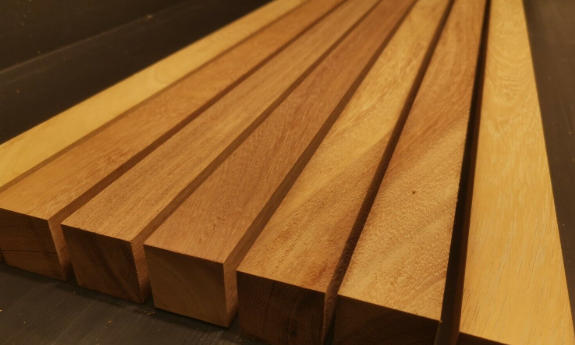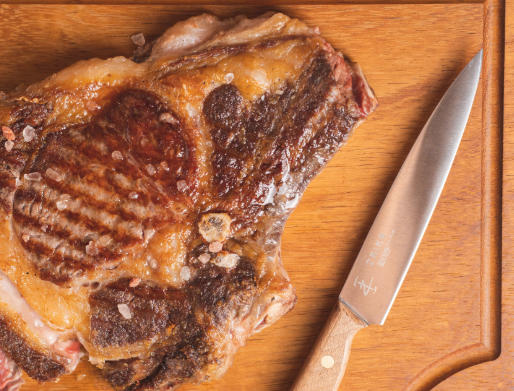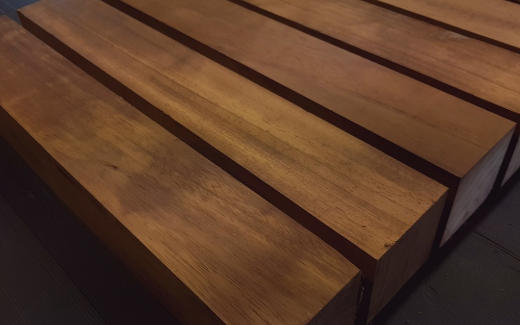Views: 222 Author: Rebecca Publish Time: 2025-10-16 Origin: Site











Content Menu
>> Botanical and Geographic Background
● The Origins and Global Path of Iroko Wood
● France's Role in the Iroko Trade
>> Is Iroko Wood Native to France?
● What Does “Imported from France” Mean?
>> Trade Terminology Explained
● Sustainability and Environmental Impact
>> Certification and Sustainable Management
● Iroko Wood in Modern Design and Industry
>> Comparisons: Iroko vs. Teak and European Oak
● French Market Trends and Future Prospects
>> Growing Demand for Sustainable Iroko
>> Innovations in Processing and Design
● Summary Table: Iroko Trade Chain Involving France
● FAQ
>> 1. Where does Iroko wood originate from?
>> 2. Does France export Iroko wood?
>> 3. What should I check when buying Iroko wood from France?
>> 4. Why do suppliers market Iroko wood as ‘from France'?
>> 5. Is Iroko wood a sustainable choice?
Iroko wood has earned an international reputation as a versatile hardwood sometimes referred to as "African teak," prized for its strength, coloration, and durability. For manufacturers and consumers seeking reliable, sustainable timber, France stands out as a major European hub of exotic wood trade and finishing. This article explores the critical questions: Is Iroko wood truly imported from France, what is its origin, and how does the French timber market shape its distribution, sustainability, and use?

Iroko is the commercial name for hardwood harvested from the species *Milicia excelsa* and *Milicia regia*, which are indigenous to tropical regions of West and Central Africa. Nigeria, Ghana, Cameroon, Benin, Ivory Coast, and the Democratic Republic of Congo are among its key habitats. There are no native Iroko forests in France or anywhere else in Europe.
- Color: Vibrant yellow, golden, or copper brown which deepens with age and exposure.
- Durability: Exceptionally resistant to rot, pet, insect infestation, and fungi.
- Density: Moderate to high, ensuring dimensional stability and long lifespan for outdoor uses.
- Workability: Can be machined, planed, sanded, and finished—though interlocked grains require careful handling.
- Applications: Flooring, decking, exterior joinery, shipbuilding, furniture, and architectural millwork.
All genuine Iroko is harvested from African forests. The majority comes from Cameroon, Ghana, Nigeria, and Ivory Coast, produced by both large commercial operations and smaller community-based logging initiatives. Due to a sensitive ecological footprint, sourcing practices are increasingly scrutinized by global environmental bodies.
Once felled, Iroko timber is typically processed in its country of origin by local sawmills, sorted, and graded. It is then exported—primarily as sawn lumber, logs, or semi-finished goods—to international markets, with Europe being the largest destination beside Asia.
No. France does not grow Iroko trees; all such timber present in France is imported.
France imports significant quantities of Iroko wood from African sources, processing and distributing it through its lumber yards, flooring manufacturers, and millworks. Although not the largest importer, France consistently ranks among the top ten European markets for this hardwood—purchasing over 140+ container shipments annually as of 2025.[2][11][12]
Iroko imported into France may undergo additional processing (e.g., drying, selection, milling, grading), be made into engineered flooring, furniture, or joinery, and then exported again to neighboring EU states. French expertise and design standards often increase the finished value of the timber.
If a product is described as "Iroko wood imported from France," it refers to the point of shipment, processing, and distribution—not the forest origin. In practice:
- The timber was grown and harvested in Africa.
- The wood arrived in France for processing or marketing.
- You are buying the product from a French supplier, brand, or distributor.
France is often chosen for its design capability, strict adherence to European sustainability regulations, and strong logistics for European buyers.
Iroko is classified as "Near Threatened" on the IUCN Red List due to high rates of over-harvesting and habitat loss. Unsanctioned logging, poor oversight, and demand for exotic timbers have driven populations down in some regions, threatening both biodiversity and local livelihoods.[1][3][4]
- Selective Logging: Responsible foresters harvest only mature trees, allowing regeneration and biodiversity.
- Reforestation: Some suppliers invest in planting programs for Iroko and companion species on degraded lands, enabling long-term sustainability and restoring habitats.[4]
- Full Documentation: Legal timber imports into France must comply with the EU Timber Regulation (EUTR), requiring chain-of-custody and legality documentation.
- Certification Schemes: Look for Forest Stewardship Council (FSC) or Programme for the Endorsement of Forest Certification (PEFC) labels, which assure responsible management and social equity in the supply chain.
Iroko's unique biology permits it to participate directly in carbon sequestration and soil enrichment. Iroko trees absorb atmospheric CO₂, and—with the help of soil microbes—convert it into mineral limestone, locking away carbon and raising soil fertility. This rare mechanism magnifies the tree's role in mitigating climate change and making it valuable in agroforestry.[7][4]

French designers and builders actively use Iroko for outdoor decking, luxury flooring, yacht fit-outs, high-end joinery, and furniture. Its durability, weather-resistance, and sophisticated aesthetic (rich grain, warm color) make it a top choice across both traditional and contemporary styles.[3][2]
It blends seamlessly with modern interiors and can be finished by staining, oiling, or varnishing, increasing versatility for creative applications.
| Feature | Iroko Wood | Teak | European Oak |
|---|---|---|---|
| Durability | Highly resistant | Extremely durable, waterproof | Good, less resistant to harsh environments |
| Cost | Moderate, accessible | High | Variable |
| Sustainability | FSC-certified, wild populations vulnerable | Some illegal trade issues, FSC available | FSC widely available |
| Appearance | Golden/copper brown, unique grain | Golden brown | Light to medium brown |
| Outdoor Use | Excellent (most applications untreated) | Excellent | Good |
Iroko is often seen as a more affordable, equally robust alternative to Teak for outdoor/exterior projects, provided responsible sources are used.[8][4]
- Always request FSC/PEFC certification and full supply chain documentation.
- Support suppliers who engage in habitat restoration, selective harvesting, and fair labor practices.
- Minimize waste by optimizing designs and processing, using all parts of the tree when possible.
- Consider alternative certified woods for vulnerable species.
French manufacturers increasingly market certified, sustainable Iroko products to meet growing consumer demand for ethical and eco-friendly materials. This transition is driven by:
- Stricter EU import regulations.
- Rising awareness of ecological impacts among consumers.
- Industry investment in responsible sourcing, with greater transparency and traceability.
Manufacturers, importers, NGOs, and government agencies in France are partnering with African communities and timber authorities to reinforce best practices, encourage forest regeneration, and build long-term sustainable supply chains. Such initiatives are critical to balancing market needs with environmental stewardship.[4]
Research in France and Africa continues to improve timber drying, milling, finishing, and application techniques for Iroko, opening new markets in engineered wood products, green building, and climate-positive construction.[10]
| Step | Description |
|---|---|
| Growth & Harvesting | Africa (mainly West & Central African countries) |
| Initial Processing | Africa (local sawmills, export grading) |
| International Shipping | Exported to EU (France, Belgium, Italy, Spain) |
| French Processing & Distribution | Milling, finishing, product manufacture, local distribution/export |
| End Use | Sold to consumers, businesses, or as finished goods within/outside France |
Iroko wood is not grown in France, but is imported from Africa and processed and distributed by French companies for a wide array of high-quality applications. France's role as a hub for finishing, certification, and market development provides buyers with access to ethically sourced, expertly handled timber. Responsible purchasing, proper certifications, and supply-chain transparency are absolutely critical to protecting vulnerable forests and promoting sustainability. Iroko's unique durability, aesthetic, and environmental promise position it as a top choice for constructions and designs that honor both nature and human craft.

Iroko wood is native to West and Central Africa, with major producing countries including Cameroon, Ghana, Nigeria, and Ivory Coast. There are no native Iroko forests in France.[2][3][4]
France does not produce Iroko wood but acts as a re-exporter, supplying processed or finished Iroko products to other European countries through its distribution networks.[2][4]
Buyers should verify certifications like FSC or PEFC, ensure compliance with EU Timber Regulation, and request full transparency about sourcing and supply chain.[4][2]
This denotes the timber has been processed, graded, finished, or sold by a French entity, not that the trees grew in France. The biological origin is always African.
Iroko is an excellent choice if responsibly harvested and certified. Its durability and ecological benefits are strong, but always ensure your supplier supports sustainable forestry practices and community welfare due to ongoing threats.[3][2][4]
[1](https://www.gowercroft.co.uk/news/sustainable-timber-choices-why-we-avoid-certain-woods/)
[2](https://duffieldtimber.com/the-workbench/buyers-guides/your-guide-to-iroko)
[3](https://mfinelumber.com/blogs/post/the-magical-benefits-of-iroko-wood-and-why-everyone-is-talking-about-it)
[4](https://www.shdtimber.com/is-iroko-wood-sustainable.html)
[5](https://logic-bespoke.com/is-tropical-hardwood-sustainable)
[6](https://bluestreamme.com/iroko-wood-from-forests-to-furniture-a-journey-of-sustainable-supply-and-value-creation/)
[7](https://www.enn.com/articles/46734-iroko-trees,-the-new-warrior-for-climate-change)
[8](https://stylenations.com/selecting-the-right-furniture-materials-iroko-wood-versus-teak-what-you-need-to-know)
[9](https://journal.gnest.org/publication/gnest_05467)
[10](https://www.tandfonline.com/doi/full/10.1080/02773813.2025.2560331?src=)
[11](https://www.volza.com/p/iroko-wood/)
[12](https://www.tosize.fr/en-fr/wood-and-wooden-sheets/timber-and-furniture-boards/iroko-wood)